Espresso machines

-
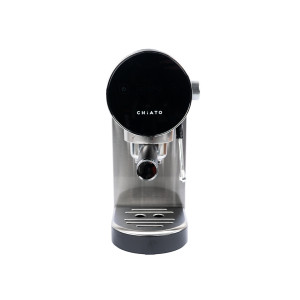 4.6Rated 4.64 out of 5(11)
4.6Rated 4.64 out of 5(11)CHiATO Luna Style Espresso Coffee Machine – Silver
£89.00 -40%£149.00 -
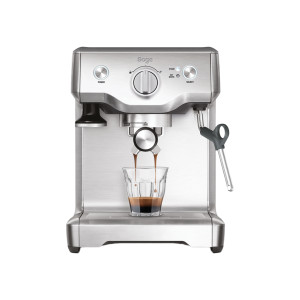
Sage the Duo-Temp Pro SES810 Espresso Machine with Milk Frother – St. Steel
£329.00 -18%£399.95 -

Ascaso Steel Duo PID Espresso Coffee Machine, Pro for Home – Inox&Wood
£1,799.00 -
 Selected espresso machines+ gift voucher of up to £75
Selected espresso machines+ gift voucher of up to £75 -
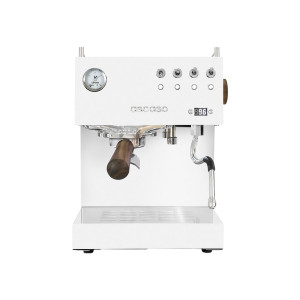
Ascaso Steel Duo PID Espresso Coffee Machine, Pro for Home – White&Wood
£1,799.00 -
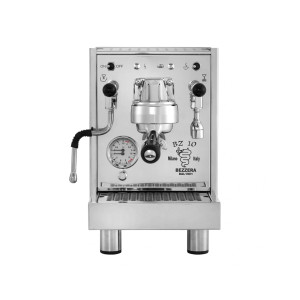 5.0Rated 5.00 out of 5(1)
5.0Rated 5.00 out of 5(1)Bezzera BZ10 PM Espresso Coffee Machine, Semi-Pro – St. Steel
£999.00 -9%£1,099.00 -
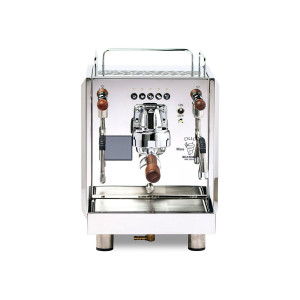
Bezzera DUO DE Dual Boiler Espresso Coffee Machine, Semi-Pro – St. Steel
£2,149.00 -

Gaggia New Classic Evo Espresso Coffee Machine – Grey
£379.00 -22%£489.00 -
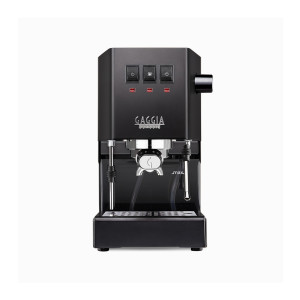 4.5Rated 4.50 out of 5(2)
4.5Rated 4.50 out of 5(2)Gaggia New Classic Evo Espresso Coffee Machine – Black
£429.00 -12%£489.00 -
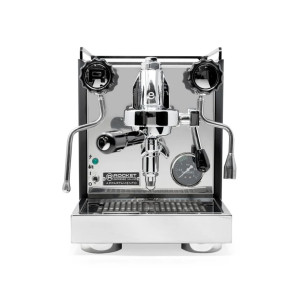
Rocket Appartamento Espresso Coffee Machine – Black&Copper
£1,390.00 -
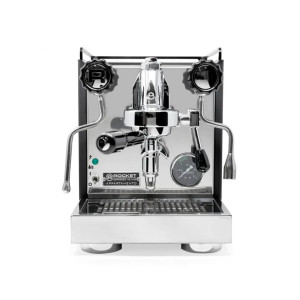
Rocket Appartamento Espresso Coffee Machine – Black&White
£1,390.00 -
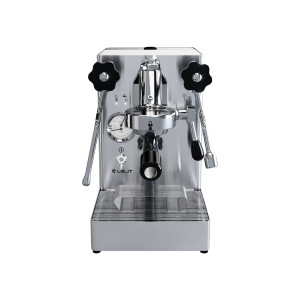
Lelit Mara X PL62X HX Boiler-Type Espresso Coffee Machine – St. Steel
£1,199.95 -
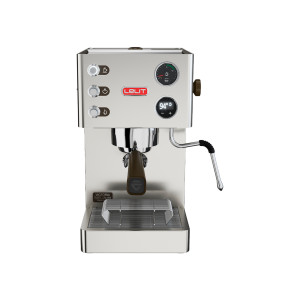
Lelit Victoria PL91T Espresso Coffee Machine – St. Steel
£759.95 -
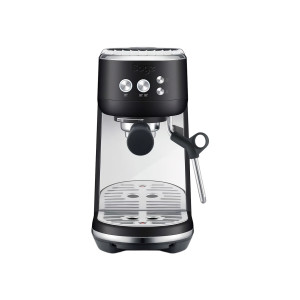
Sage the Bambino™ SES450BTR4EEU1 Espresso Machine with Milk Frother – Black
£279.95 -15%£329.95 -

Lelit Anita PL042TEMD PID Espresso Coffee Machine Grinder – Silver
£599.95 -
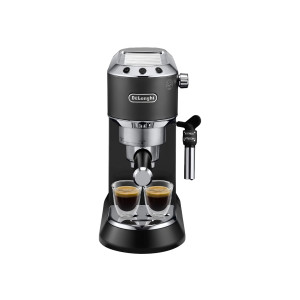 4.5Rated 4.50 out of 5(30)
4.5Rated 4.50 out of 5(30)DeLonghi Dedica Style EC 685.BK Espresso Coffee Machine – Black
£148.00 -12%£169.00 -
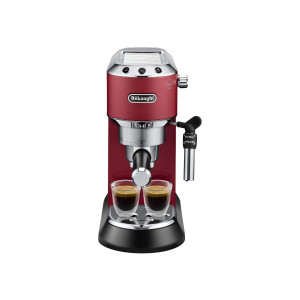 4.8Rated 4.82 out of 5(22)
4.8Rated 4.82 out of 5(22)DeLonghi Dedica Style EC 685.R Espresso Coffee Machine – Red
£148.00 -12%£169.00 -
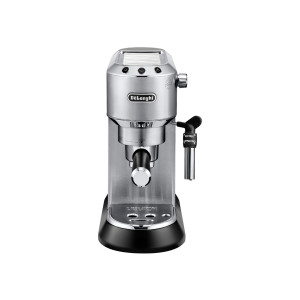 4.7Rated 4.72 out of 5(43)
4.7Rated 4.72 out of 5(43)DeLonghi Dedica Style EC 685.M Espresso Coffee Machine – Metal
£148.00 -12%£169.00 -
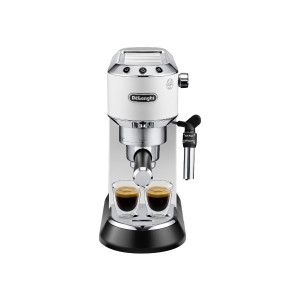 4.5Rated 4.45 out of 5(20)
4.5Rated 4.45 out of 5(20)DeLonghi Dedica Style EC 685.W Espresso Coffee Machine – White
£149.00 -12%£169.00 -
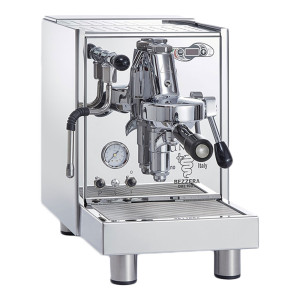
Bezzera Unica PID MN Espresso Coffee Machine, Pro for Home – St. Steel
£949.00 -5%£999.00
About Espresso Machines
An espresso machine is the perfect way to elevate your coffee-drinking experience. Using a combination of hot water and pressure pulsed through the coffee beans, these nifty machines concentrate the brew into the delicious espresso we all love. The espresso coffee machine has been a staple in coffee shops across the globe for decades. However, they’re not just for professional baristas anymore- you can now enjoy a delicious espresso shot right in your own home!
What espresso machine should I buy?
Given the vast amount of choices in the market, each with its own features and prices, making the right decision for your home can feel overwhelming. Let’s simplify your search. Here are some important factors to consider and a breakdown of different types of espresso machines:
Semi-automatic espresso machines
A semi-automatic espresso machine offers a great balance between manual control and automation. You can adjust variables such as grind size, water temperature, and extraction time to create the perfect cup made exactly to your tastes. Meanwhile, the machine automatically regulates the water flow through the coffee grounds. Additionally, semi-automatic coffee machines typically include a steam wand for milk frothing- perfect for your favourite milk-based drinks.
Manual (Lever) espresso machine
A lever espresso machine, also known as a manual espresso machine, uses a lever to manually pressurise the water flow through coffee grounds. This level of control enables flavour experimentation to perfectly match your preferences. Manual lever machines are also typically more compact than electric ones. This style of machine does require more skill and practice compared to semi-automatic models, however.
Espresso machine with grinder
Most espresso machines come without a built-in coffee grinder, meaning you’ll have to purchase one separately. However, if your space is limited, there are some espresso coffee machines with a grinder on the market. What’s more, they allow for grind size adjustment to ensure the perfect cup every time. Curious? Why not try La Pavoni Domus Bar espresso machine with grinder built in?
Espresso machine with milk frother
Is simply frothing the milk not enough for you? Would you like a full professional set-up? Or even to try your hand at latte art? If so, you’ll need an espresso machine with milk a frother tube that will allow you to do just that. Your typical basic espresso machine has wide steam tubes suitable for simple frothing. However, for a silky consistency and latte art, a narrower tube with a rounded wand and at least 2 holes is necessary. You can explore various milk system types using our onsite filters.
Portable espresso machine
The portable espresso machine was created for coffee enthusiasts on the go. These are small, lightweight machines that allow you to brew coffee wherever you are, while travelling, or even outdoors. They use coffee pods (ESE pod machines) or ground coffee to brew a quick cup. You will find plenty of hand or battery-powered portable espresso coffee makers in our online shop.
Manual espresso maker
Manual espresso maker is a catch-all term for both portable and lever espresso machines. As mentioned above, these appliances require you to apply pressure manually for a hands-on brewing experience. Both allow you to make a unique cup of espresso, tailored to your tastes. Portable machines are usually less complex and smaller, so they’re easy to keep and store, but can’t offer all the bells and whistles of fancier machines.
Professional espresso machines for cafes
Professional coffee machines for cafés are designed for high-demand environments. Their larger boilers, multiple group heads, and advanced features allow for seamless handling of continuous, high-volume orders. These espresso machines offer programmable shot volumes, pre-infusion and extraction times, and even pressure profiling. In our lineup of professional coffee machines, the La Marzocco espresso coffee machines are particularly worth noting. This brand is renowned for its handcrafted quality, premium components, and cutting-edge technology.
What to look for when buying an espresso machine?
Espresso machines vary from affordable domestic models right through to high-end machines that would fulfil any barista’s dreams. To find your perfect match, follow our espresso machine buying guide below. You’ll also discover some top espresso machine brands everyone can trust.
Espresso Machines By Skill Level
Espresso brewing is an art and it takes time to master. If you lack experience, buy an espresso machine for beginners with automation, presets, and other user-friendly features. These often have smaller portafilters (around 49-53 mm) and thermoblock systems (more details below). For example, take a look at these De’Longhi espresso machines. The brand is known for its simple button operation and straightforward controls and often includes detailed instructions or built-in programs to assist beginners in espresso making.
On the flip side, advanced espresso machines need a deeper understanding of espresso extraction. They typically utilise a single/dual boiler or HX system, a larger portafilter (57-58 mm), and pressure profiling capabilities. They also offer features like advanced steam wands and allow for programmable shot volumes, pre-infusion, and preset extraction times. Consider Rocket Espresso coffee machines. They cater to the most discerning home baristas, with domestic models sporting dual PID-controlled boilers and a built-in extraction timer. More advanced models even offer innovative pressure profiling systems and larger boiler capacities.
Espresso Machines By Price Range
Espresso machines come in a range of price options and there’s something for every budget and preference. Here are some of our favourites by price category. Looking for something different? You can also filter by your price range on our website!
Espresso Machines Under £200
In our onsite selection, you’ll find plenty of De’Longhi Dedica, Krups Virtuoso, and Flair Espresso machines under £200. De’Longhi and Krups offer user-friendly button interfaces and quality manual steam nozzles. Their thermoblock systems ensure quick preheating and the 15-bar pump brews a full-bodied espresso rapidly. A Flair espresso maker, on the other hand, will need additional equipment- namely a kettle for boiling water and a frother for milk-based recipes. However, these nifty models provide the hands-on experience of brewing authentic coffee. Plus you can take them with you on your travels! Another good entry level espresso machine machine is the CHiATO espresso coffee machine.
Espresso Machines Under £500
In this price range, you’ll find the Smeg 50’s Style and Gaggia espresso machines, both boasting a 15-bar pressure for ever-perfect results. Smeg’s 50’s Style model offers precise temperature and pressure control with its advanced thermoblock heating system. Gaggia espresso machines feature a professional steam wand, enhanced brass group, and premium stainless-steel filter holder, all designed for consistent coffee temperature.
Espresso Machines Under £1000
In this price range, you have your choice of Italian espresso machine brands like Bezzera and La Pavoni, or the Spanish brand Ascaso. These models come with a wealth of advanced features, including PID temperature control, advanced heating systems, and powerful steam capabilities. La Pavoni coffee machines, particularly those with a lever, offer even more control over the espresso-making process for truly personalised shots.
What else to Consider When Buying An Espresso Machine?
Water Temperature Adjustment
Water temperature significantly influences coffee taste, bringing to life the subtle flavours of the beans. To ensure your espresso machine meets your temperature needs, check if it allows water temperature adjustment and how it’s achieved.
Most high-end espresso machines use PIDs (Proportional Integral Derivative controllers) to regulate temperature down to the exact degree. For instance, some Rancilio espresso machines feature dual PID controllers in the coffee and steam boilers, ensuring consistent, precise, and stable temperatures shot after shot. To find more models with similar features, use our handy onsite filter!
Heating System
The heating system of your espresso machine determines whether you can froth milk simultaneously while brewing or if you’ll need to wait.
The Thermoblock Espresso Machine provides instant brewing but with some temperature stability limitations. However, some manufacturers have launched improved versions with greater versatility. If you’re looking for a trusted thermoblock espresso machine, Ascaso espresso machines are worth considering. Their aluminium and stainless steel thermoblock group guarantees a consistent steam supply, ensuring quality without risking heating element damage from low water levels.
Moving up the quality scale, you’ll find espresso machines with a built-in boiler, often referred to as a Single boiler espresso machine. These boilers offer a pre-heated water supply for temperature stability during brewing. The size of the boiler affects the heating time and how long it will take to brew your coffee.
A Dual Boiler Espresso Machine has two separate boilers, one for brewing coffee and the other for producing steam. This allows for simultaneous milk frothing and coffee brewing but comes at a higher cost and with a longer heating time.
A Heat Exchanger Espresso Machine uses a single steam boiler with a tube carrying cold water for coffee brewing. This style can brew coffee and steam milk simultaneously. For example, Bezzera espresso coffee machines can fully heat in just 8-10 minutes thanks to their reliable heat exchange boilers.
Measurements
The size of your espresso machine is important too. Domestic models still tend to be quite large, so make sure that your preferred choice will fit your kitchen counter easily. If you are looking for a small espresso machine, consider a manual espresso maker. De’Longhi Dedica and Smeg espresso coffee machines start at only 15 cm wide, too!
Design
While not the most critical factor when choosing an espresso coffee machine you still want something that appeals to you. Love the nostalgia of vintage espresso machines? Look no further than the Elektra espresso machines. They incorporate classic design cues for a retro feel, like chrome accents and intricate detailing. You may also like La Pavoni, Ascaso, or Smeg 50’s Style retro espresso machines. If you prefer a sleek and modern design perfect for an urban kitchen, the stylish Stone Espresso coffee machines will steal your heart.
How to Clean an Espresso Machine
Proper espresso machine cleaning is vital for achieving optimal brewing results. You can make this easier with dedicated coffee machine cleaning products. For daily care, remember to rinse the brew group before and after each use, wipe the portafilter clean, and ensure the tamper is free from old coffee grounds. For weekly or monthly maintenance, backflush your device using the dedicated program (if available). Otherwise, manually backflush your espresso machine by cycling water through the group head, pausing, and repeating the process. Soak the portafilter and meshes in warm water with a cleaning tablet and clean the steam wand’s holes.
How often to descale an espresso machine?
Descale your espresso machine regularly by using a coffee machine descaler. Try to do this every 1-3 months, depending on the hardness of your water and how often you use the machine.
To learn more, read our espresso machine cleaning guide.
If you need help, ask Coffee Friend!
Don’t forget that we regularly update our range of coffee machines! You’ll find everything from top espresso machines to brand-new bean-to-cup styles, filter machines, and other models. So the perfect match is waiting for you. You’ll find key information about each brand on our website, or you can always ask Coffee Friend’s team of experts for personalised help. Why wait? Buy an espresso machine that suits your needs today, and delectable coffee will only be a button press away!
